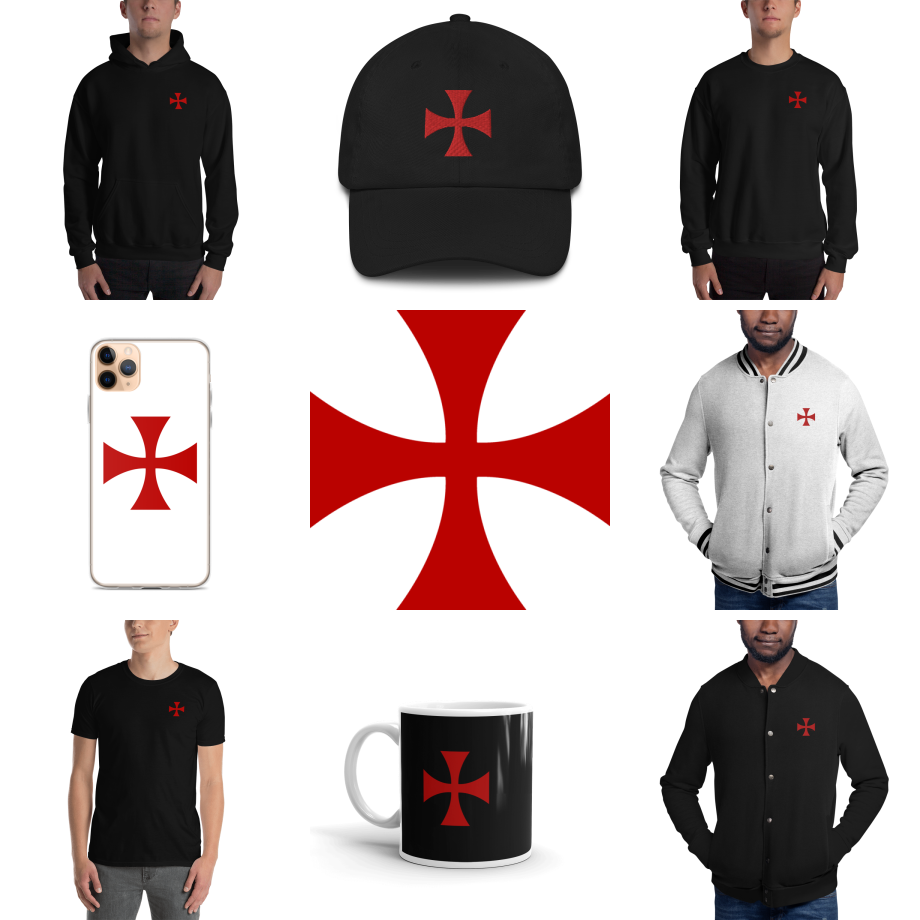For those who have enjoyed Craig Weightman’s thought-provoking and inspiring monthly features, this book collates his collective wisdom and philosophy, taking you on a fascinating ‘journey in stone’.
Over the next months, we will feature select extracts from ‘A Journey in Stone’ – if you enjoy these, please support Craig’s work by buying a copy.
“This book is the result of years of exploration by myself since I joined the Order of Freemasons in 2004. After following an identical story to the one expressed at the beginning of this preface, I found the process of initiation a truly transformative process.”
Craig Weightman.
A Journey in Stone
Abridged extract from the Introduction:
It is widely believed that Freemasonry began with the mediaeval stone-guilds. These guilds essentially behaved as a quality-control mechanism in the stone-working industry.
To this end, the secrets and techniques of stonework were kept a close secret, accessible only to members of the guild.

It was important that members of the stone-guild kept the techniques imparted to them a secret and this meant that only those who could be proved as moral and honourable individuals could become apprenticed members.
Morality would have been of primary importance for these operative masons.
To ensure that only members of the guild could access their meetings, and also gain work at building-sites, a system of secret handshakes and passwords was created for means of identification.
These forms of recognition are still used today and, it must be stressed, are the only official secrets of Freemasonry.
Of course, in the mediaeval era, many people were illiterate and also very God-fearing.
Therefore, in order to teach and maintain morality, the stone-guilds utilised a technique of moralising on the tools and techniques of stonework by using these everyday building elements as metaphors for moral concepts.
The God-fearing stonemason was also reminded that God is always watching, and so one should maintain morality, wherever they are.
How did operative masons become what we now know as Freemasons?
It is believed that, amongst the many members who actually worked stone, there were some members who were honorary in nature.
These honorary members would not work stone, but would still be initiated into stone-guild lodges, and take part in their meetings.
These members were called Free and Accepted Masons, or Freemasons for short.
Eventually, as the power of the operative stone-guilds waned, operative members would decline over time, leaving the honorary Free and Accepted members.
Lodges would eventually be composed primarily of Freemasons, and it would seem that the focus on the craft of stonework was replaced by another craft, that of moral development.
Indeed, Freemasonry is often called ‘the Craft.’ This, then, is how Freemasonry exists today.
This book examines Freemasonry in terms of being a club for self-development, which uses stonework as a metaphor for this purpose.
It sees it as a society that encourages the member to look at their life as a stone block that is to be carved and shaped into something meaningful.

Upon entering Freemasonry, a new Candidate is intended to be seen as a stone taken from a quarry.
As this stone is passed through the stonework process it is honed to a smooth stone block, to be included in a larger edifice or building.
If this quarried stone can be seen as representing the individual Mason, then the building it is intended for, being composed of similar blocks, can be seen to represent society as a whole.
Therefore, the individual self-development talked about here, rather than being selfish, is intended to serve society as a whole.
Just as each block plays a full role in allowing a building to stand, so the developed Mason has found how they can fully serve and support society as a whole.
The symbolic language borrowed from the stonework process consists mainly of the tools used.
As mentioned above, it is to be imagined that these tools can be used to hone the Mason into something more useful for society.
To give two examples: in stonework, the gavel, which is a small hammer-like tool, is used to knock off rough parts of a stone. In Freemasonry, this gavel represents the force of conscience.
The chisel is used in stonework to smooth the stone further in its preparation for inclusion in the larger building.
In Freemasonry the chisel represents education.
Freemasonry, then, is a journey, a journey that serves to sculpt a person into a more useful element of society.

However, this journey requires a story to provide structure and also perhaps a little context.
The job of this context is undertaken by a legend which is set around the biblical story of the building of King Solomon’s Temple. This building was believed in Old Testament times to be literally the house of God.
The Temple was the home of the Ark of the Covenant, and was specially designed to be worthy of such a purpose.
Therefore, in Freemasonry, it can be seen that King Solomon’s Temple can be treated as the ideal template for an ideal societal metaphor, where individual stone blocks come together to create a decent society.

Solomon Building the Temple, from The Story of Solomon.
After Maarten van Heemskerck (Netherlandish, Heemskerck 1498–1574 Haarlem) 1554.
IMAGE LINKED: metmusuem.org Attribution 4.0 International (CC BY 4.0)
Clearly God is central to the building of the Hebrew temple, so it is no surprise that God is mentioned during the story’s telling.
It is here that mention should be made of Freemasonry’s further use of symbolic language to promote the tolerance of members coming from a diverse range of belief systems.
So that a Mason of any religion can see the deity mentioned in the Masonic story as the deity of their own faith, the symbolic name for ‘God’ is ‘The Great Architect of the Universe.’
This is done so that the individual Mason can relate the moral teaching of Freemasonry to their own beliefs.
The term ‘Great Architect of the Universe’ is often misconstrued by non-Masons to be a kind of Masonic God.
However, this is not true, and is only a general term to be used to signify the deity in general.

Generally speaking, in English lodges the Bible is opened at every meeting. During initiations, obligations are taken on this document, and an alternative to the Bible may be used as required.
Freemasonry directs a Mason to study the scripture of their faith in order to know, understand, and follow divine law.
To account for diverse religious backgrounds, there is a general symbolic term which allows Freemasonry to talk about the central scriptures of all faiths in a single term.
This general term is ‘The Volume of the Sacred Law.’
Going back to where we mentioned the development of oneself to better serve society, it should be remembered that, as a stone is sculpted to fully serve its part in the upholding of a structure, so a Freemason is encouraged to understand how they can fully serve and support society.
This objective requires self-knowledge, and the acquisition of this knowledge is a deeply personal journey.
Therefore, Masonic ceremony is designed to reflect this personal journey, and Candidates are led through and directly experience a three-part symbolic story.
It is usually down to the Mason to interpret this experience for themselves.
This book has been written for both Masons and non-Masons.
For the Masonic audience it intends to help Masons better understand their Craft in terms of moral and personal development.
For the non-Masonic audience, the book hopes to reveal what Freemasonry is all about and to help put to rest many of the rumours that have surfaced over the years.
In the book, you will follow the Candidate through Freemasonry and learn about some of the symbols that are utilised, with a focus on how they use the metaphor of stonework to encourage personal and moral development.
We will move from the moment a Freemason joins until the point when they theoretically discover who they are and what they can offer society as a whole.
It would seem, at first glance, that the stone-guilds would be an odd place to find the same spiritual philosophy.
However, the stone-guilds were the keepers of great secrets that enabled the construction of wonderful edifices that would seem to defy the forces of nature in order to remain standing.
The knowledge of how to do this was considered very special indeed. In fact, understanding the physical laws to be utilised at will was like understanding how the divine had constructed the universe.
Therefore, to understand the science of construction was to have glimpsed the nature of the divine.
The stone-guilds were not alone in this. In ancient times, the Pythagoreans would place spiritual significance on the relationships between numbers.
These relationships could be seen reflected in the world around them, and the very workings of the world seemed to be dependent on them.
Even the Egyptians understood Pi and its relationship to the circular structures seen in nature.
Therefore, this mathematical spiritual knowledge and its expression in the art of stonework and building can easily be linked to the divine revelation of initiation.

The stonemason, and then the Freemasons who descended from them, would therefore have imparted the same knowledge that neophytes in other traditions would partake of, and the Masonic Initiates would feel the union between themselves and the divinity behind the world.
After providing context, the book then moves on to the symbolism that is used to represent the Initiate when they first enter Freemasonry.
This representation of a rough stone, freshly hewn from the Earth in preparation for the work of initiation, is the perfect place to start in a tradition that likens inner development to the crafting of stone.
The representation is analysed in detail, and a picture is drawn of the particular faculties, which are to be improved as the Freemason moves through the regenerative process of Masonic ceremony.
Importantly, where necessary, the metaphor of the rough stone or ashlar is framed in a modern interpretation.
In the chapter immediately following the description of the rough ashlar we analyse the working-tools of the First Degree.
The emphasis in the First Degree is on initiating the Candidate into the whole system of Freemasonry, and introducing them to what is expected of a Freemason once they have joined.
The point of initiation is made very clear throughout this book; one doesn’t simply join Freemasonry as one would join an ordinary club.
One is initiated into Freemasonry, and this means a line is drawn under the life that has been lived prior to entering the lodge, at which point the new life of the Freemason begins.
The challenge of being a Freemason is to live one’s life while aspiring to the highest moral virtues, and a person who becomes a Freemason undertakes to tread this very same path.
During the process of initiating the new Freemason into the Craft, the First Degree working-tools are presented to them. These tools represent the active crafting of the Self, and are the basis of any future Masonic growth.
The chapter on the Second Degree’s working-tools takes the emphasis on active self- development and places it within the context of self-measurement and mindfulness of the Self.
The Second Degree is representative of how the Freemason should proceed through life, and places a particular emphasis on the understanding of the hidden mysteries of nature and science.
Where the theme of the First Degree is direct moral development, the theme for the Second is the intellect and rationality.
Each of the three tools of the Second Degree are purely tools of measurement, and are designed to emphasise that the Freemason should ever be mindful of their progress in the crafting of themselves.
This progress is always measured against the guiding principle of the perfect ashlar, the smooth stone that represents the goal on which the Freemason sets their sights.
As the Freemason moves further away from the path, the tools of the First Degree should continue to be utilised until the correct course has been regained.
In the final part of the crafting journey of the Freemason, the emphasis begins to shift from a focus on the Self to a focus on the wider context of Freemasonry.
It is in the Third Degree where the Self is analysed and the emphasis on it reduced in favour of society as a whole.
To reflect this shift in focus, the three working-tools of this Degree are all tools that are to be used in the wider context of the building-site.
By using the tools of the Third Degree, the Freemason begins to find their place amongst the world and to understand the true purpose of Freemasonry itself.
Particular emphasis is placed here on understanding a spiritual interpretation of moral values, and a case is made for a transcendent origin of morality.

In the final chapter, Freemasonry is confirmed as an heir to the tradition of initiation in an analysis of the Holy Royal Arch’s Ceremony of Exaltation.
This particular part of Masonic initiation is most obviously mystical in its make-up. In this chapter, a description of some of the story of the Exaltation Ceremony is included, so that the intended meaning of the symbolism can be properly explained.
It is at this point in the book that the aim of searching deep within to find evidence of the transcendent source is explained.
In this regard, the whole of Freemasonry is revealed as having the same ultimate aim as every other tradition that has had initiation at its core.
The total journey, as it is laid out in the book, has a spiritual as well as moral thread running all the way through, so the conclusions drawn in the final chapter will, more than likely, come as no real surprise.
However, it must be understood that the journey of Freemasonry is not merely taken to be made up of just the three initiation ceremonies.
It is intended that the journey of the Freemason is, in actual fact, the journey through life. After all, the lessons of the initiation ceremonies can only be tested in the laboratory of the Freemason’s own life.
Nothing in Freemasonry is to be taken at face value; the fact that the entire system is made up of symbolism and allegory should confirm this.
Everything in the Craft is open to interpretation, and it can even be rightly said that Freemasonry is slightly different for each Freemason.
Video Presentation
Reproduced with permission from the publisher Lewis Masonic. All rights reserved.
Follow Craig on Twitter: @WeightmanCraig
Read about Craig’s work as a Senior lecturer in Games and Visual Effects, Staffordshire University
https://theconversation.com/profiles/craig-weightman-430199/articles
Article by: Craig Weightman

Craig Weightman grew up in Hinckley, Leicestershire and was educated at the University of Leicester, gaining a degree in Psychology and Computer Science.
He was initiated into Freemasonry in 2003, and became master of his lodge in 2014.
Outside of his interests in Freemasonry, Craig is a lecturer in Computer Games Design and Computer Science at a college in Warwickshire. He also develops websites for businesses.
Craig is the author of 'A Journey in Stone'.
 A Journey in Stone – Extracts of Wisdom p.10 More extracts of wisdom from Craig Weightman's book 'A Journey in Stone' – in this final part in the serialisation, we discover the Transformative Symbolism of the Royal Arch – and the end of the journey. |
 A Journey in Stone – Extracts of Wisdom p.9 More extracts of wisdom from Craig Weightman's book 'A Journey in Stone' – this month, we explore the 'Illusion of the Self and the Truth of Interdependency' |
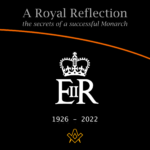 A Royal Reflection – the secrets of a successful Monarch On the death of Her Majesty Queen Elizabeth II, Craig Weightman, in a fitting tribute to an exemplar, recently departed, reflects on how the late Monarch's life demonstrated how we should all live every moment, as we serve others. A poignant reflection on a life that was resplendent in virtue, to the benefit of all, which is what Freemasonry attempts to teach us. |
 A Journey in Stone – Extracts of Wisdom p.8 More extracts of wisdom from Craig Weightman's book 'A Journey in Stone' – this month, we explore |
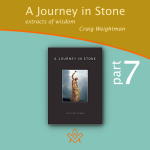 A Journey in Stone – Extracts of Wisdom p.7 More extracts of wisdom from Craig Weightman's book 'A Journey in Stone' – this month, we explore |
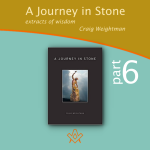 A Journey in Stone – Extracts of Wisdom p.6 More extracts of wisdom from Craig Weightman's book 'A Journey in Stone' – this month, we explore the Working Tools of the Third Degree. |
 A Journey in Stone – Extracts of Wisdom p.5 More extracts of wisdom from Craig Weightman's book 'A Journey in Stone' – this month, we explore the Working Tools of the Second Degree. |
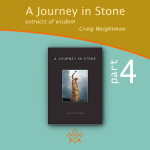 A Journey in Stone – Extracts of Wisdom p.4 The Working Tools of the First Degree – the twenty-four-inch gauge. This book collates masonic author and psychologist, Craig Weightman's collective wisdom and philosophy, taking you on a fascinating 'journey in stone'. |
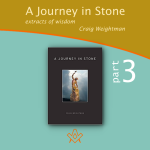 A Journey in Stone – Extracts of Wisdom p.3 This book collates masonic author and psychologist, Craig Weightman's collective wisdom and philosophy, taking you on a fascinating 'journey in stone'. |
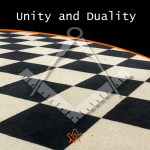 Craig continues his previous exploration into the 'hero's journey' through life's travails; this month we discover how within the stormy sea of battling opinion and confusion, there is an island called Freemasonry. |
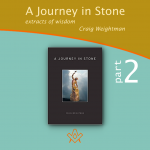 A Journey in Stone – Extracts of Wisdom p.2 This book collates masonic author and psychologist, Craig Weightman's collective wisdom and philosophy, taking you on a fascinating 'journey in stone'. |
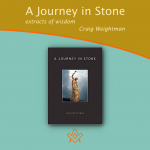 A Journey in Stone – Extracts of Wisdom p.1 For those who have enjoyed Craig Weightman's thought-provoking and inspiring monthly features, this book collates his collective wisdom and philosophy, taking you on a fascinating 'journey in stone'. |
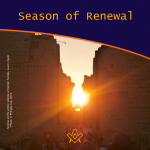 This spectacle takes place at the same time every year. Literally, the sun 'dies' for three days, then is reborn on the Christmas morning. |
 Coming to Terms with the Great War Within Ourselves Discover your 'shadow' - the black-and-white path to self-awareness - "A man who is possessed by his shadow is always standing in his own light and falling into his own traps...living below his own level." - Carl Jung |
 The Masonic Art of Being a Gentleman What defines the masonic art of being a gentleman; a chivalrous, courteous, or honourable man? |
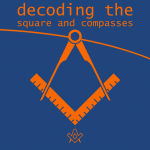 Decoding the Square and Compasses The square and compasses is the most famous symbol with which Freemasonry is identified. However, this is not just a logo that helps the organisation to stand out from the rest. |
 Each moment is a gift that you can make the most of. We can all do more; many of us do not live our lives to the full. |
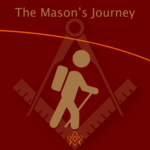 The hero’s journey can also be seen in the Masonic system; a candidate first considers embarking on the Masonic journey but wonders whether it is really for him |
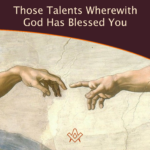 Those Talents Wherewith God Has Blessed You Incorporated in the charge to the initiate, has a lasting impression of what Freemasonry is all about. |
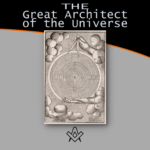 The Great Architect of the Universe When a candidate for 'Regular' Freemasonry is interviewed, prior to being admitted, he is always asked if he believes in a Supreme Being. |
masonic knowledge
to be a better citizen of the world
share the square with two brothers

click image to open email app on mobile device
